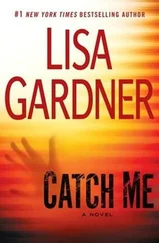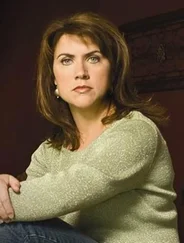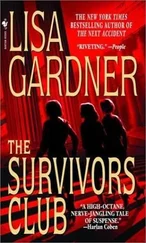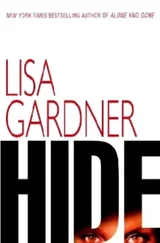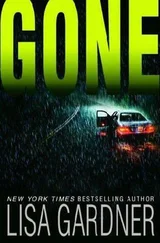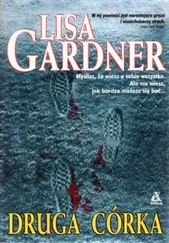Good times in the new world order.
I was lucky. My mom fought the good fight. Never gave in to hopelessness, at least not in front of me, though subsidized housing units have thin walls and many nights I woke up to the sound of her sobbing. Grief. Exhaustion. Stress. By rights, she was entitled to all three, and in the morning, I never spoke of it. Just got up, and continued on with the business of surviving.
I discovered art in high school. Had a great teacher, Mrs. Scribner, who wore bright-colored peasant skirts and stacks of silver and gold bracelets, as if a gypsy had gotten lost in inner-city Boston. Students made fun of her. But the second you entered her classroom, you couldn’t help but be transported. She covered the bone-white walls in Monet’s water lilies, Van Gogh’s sunflowers, Pollock’s splattered drips and Dali’s melting clocks. Color, flowers, shapes, patterns. The dingy halls and battered lockers and leaking drop ceilings of an underfunded public high school faded away. Her class became our refuge, and guided by her enthusiasm, we tried to find beauty in an existence that for most of us was harsh and, for many of us, tragically short.
When I told my mom I wanted to study art in college, I thought she was going to spit nails. Fine art, what kind of degree was fine art? For the love of God, at least study something practical like accounting, where one day I could get a real job, and earn enough money to get both of us out of this hellhole. Or, if I absolutely had to be creative, what about a marketing degree? But at least study something useful that would one day qualify me for doing more than asking, “Do you want fries with that?”
Mrs. Scribner brought her around. Not by arguing that I had talent worth pursuing, or dreams worth chasing, but by mentioning there were a number of scholarships available for inner-city youths. At that stage of the game, free money was the key to my mother’s heart. So I studied and painted and sculpted, exploring various artistic media, until one day I read about silver-infused clay and realized I could combine sculpting with jewelry design, the best of both worlds. My mother even liked it, because jewelry was tangible, something you could sell, maybe to some of her cleaning clients if it came down to it.
I got into college just in time for my mom to be diagnosed with lung cancer. Darwinism, she would mutter, while gazing longingly at her pack of cigarettes. She had options, but none that she pursued very hard. Honestly, I think she still missed my father. I think, nine years later, she just wanted to see him again.
I buried her my sophomore year. And just like that, I was twenty years old and alone in the world, armed with a college scholarship and the desperate need to create, to find some beauty in a world that was just so grim.
I did okay. My parents raised me right. By the time I met Justin, he marveled over both my innate resilience and inner vulnerability. I worked hard but accepted his helping hand. I never questioned his desire to work hundred-hour weeks, as long as he never questioned my need to be alone in an art studio, armed with precious-metal-infused clay. I never expected to be saved, you know, didn’t go looking for Prince Charming or think that once I met him, now I’d get to live happily ever after and never want for anything ever again.
And yet… I fell hard. Completely, passionately in love. And if this strong, handsome, incredibly hardworking guy wanted to give me the world, well, who was I to argue?
We had balance, I told myself. We had love, mutual respect and a whole lot of lust. Which was shortly followed by the Boston brownstone, the cars, the clothes, not to mention an entire lifestyle beyond my wildest dreams.
Then we had Ashlyn.
And if I’d once fallen hard for my husband, I fell even harder for my child. It was as if my entire life had been building to this one moment, my finest work, my greatest accomplishment, this tiny bundle of precious life.
That first night, her sleeping form bundled against my chest, I solemnly stroked her pudgy cheek, and shamelessly promised her the world. She would never want for anything—food, clothes, safety, security. She would not live forever haunted by the taste of birthday cake or the smell of melting wax. She would not fall asleep to pops of gunfire or wake up to the sound of her mother crying.
For her the skies would be bright, the horizon unlimited, the stars always within reach. Her parents would live forever. Her every need would be met.
This, and more, I promised her, my darling girl.
Back in the days when my husband and I were still in love and I was convinced that, together, we could handle anything.
Chapter 6
THE BASE OF THE STAIRCASE CURVED, but once on the second floor, it surrendered to the more traditional switchback approach. D.D. didn’t stop on the second floor, but continued climbing to the third.
Tessa still didn’t see any more detectives, and only a smattering of yellow evidence placards, most of which seemed to be identifying black scuff marks. From the attackers, she was more and more willing to bet. A good housekeeper would’ve cleaned up the marks before now, while a good wife would’ve demanded the offending boots be left by the front door.
“There’s an elevator,” D.D. said.
“Seriously?”
“Yep. Shoots all the way from the basement garage to the fourth-story rooftop patio. The beautifully wood-paneled double door you see off each hallway—the elevator door is tucked behind it. Panel slides to the right, you hit the button and voilà. I bet the wife uses it every time she returns home from yoga.”
Tessa didn’t say anything. Apparently, running a hundred-million-dollar construction firm had its perks.
“Also, in the basement,” D.D. continued, “a wine cellar, built-in gun safe and an au pair suite. Wine cellar and gun safe are both locked and appear undisturbed. The au pair suite wasn’t locked, but equally undisturbed.”
“Do they have a nanny?”
“Not anymore. Probably when Ashlyn was young, though. Now they just employ the housekeeper, Dina Johnson, and she doesn’t live on the property.”
“Big house for three people,” Tessa observed. “What are we looking at, about two thousand square feet per family member? How do they even find each other?”
D.D. shrugged. “A lot of families seem to prefer it that way.”
“Sophie still crawls into my bed half the time,” Tessa heard herself say.
“Really? I only wish Jack would sleep. Apparently, he’s on a five-year plan.”
“Don’t worry. Preschool will take the fight out of him. Toddlers chase other toddlers around all day, and next thing you know, they’re asleep by seven.”
“Great. Just two more years to go.”
“Assuming you’re only going to have one child.”
“Hah, I was doing good to reproduce at forty. As far as I’m concerned, the baby factory is out of business. You’re the youngster; you have a second, and I’ll borrow.”
They arrived on the third floor, the staircase dumping them into a wide hallway liberally sprinkled with doorways. Tessa immediately spotted half a dozen evidence placards, plus one lanky, carrot-topped detective leaning against the wall, surveying the scene.
“Neil,” D.D. called out. “Brought you a guest.”
Neil looked up, blinked his eyes. Tessa still thought the redhead looked approximately sixteen, but then he narrowed his gaze, and she saw crow’s-feet crinkle the corner of his blue eyes.
“What?”
She stepped forward, offering a hand. “Tessa Leoni. Northledge Investigations. The owner of the property, Denbe Construction, hired me to conduct an independent assessment of the situation.”
“The owner? Denbe Construction… Wait. Tessa Leoni? The Tessa Leoni?”
Читать дальше




